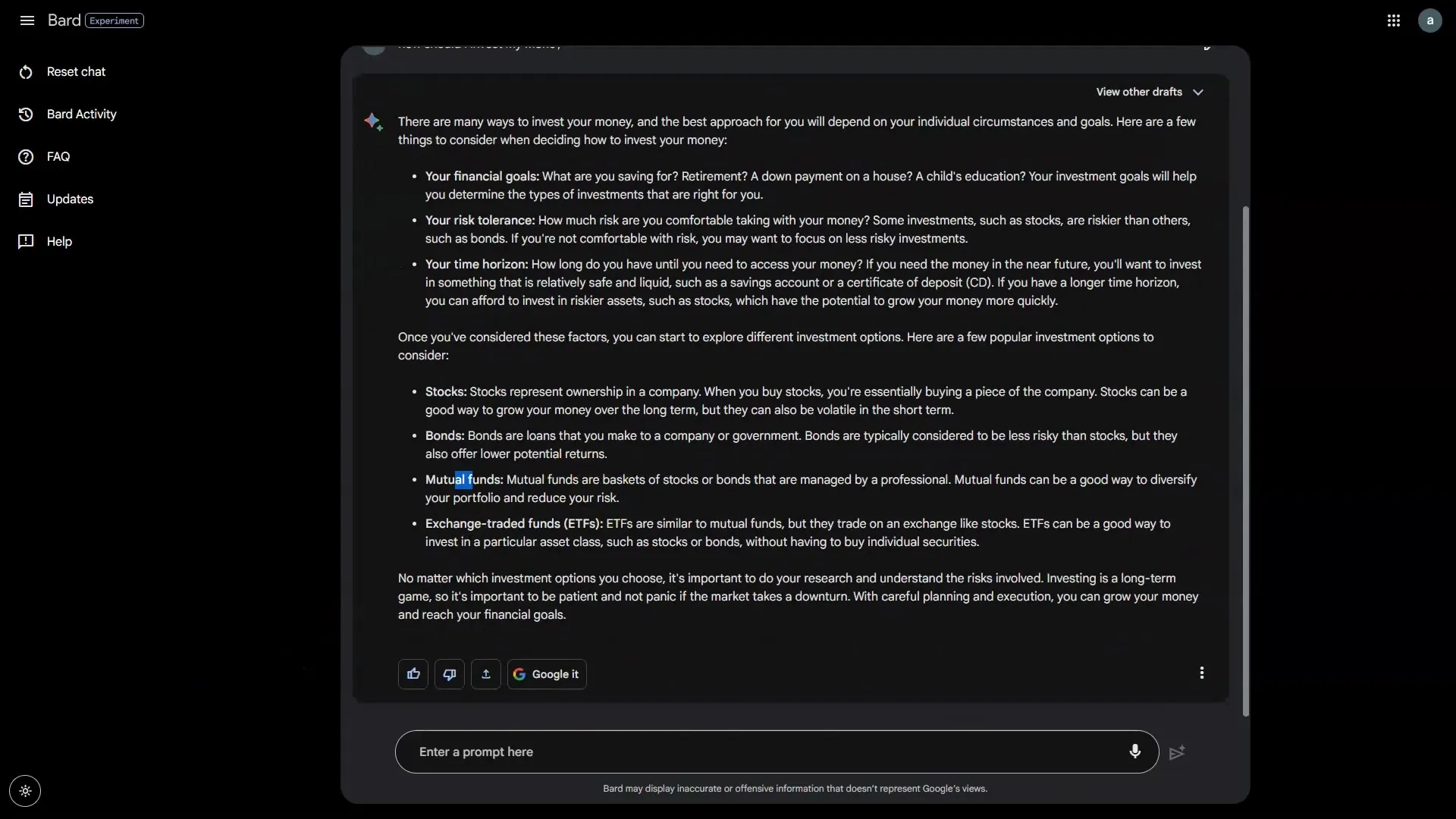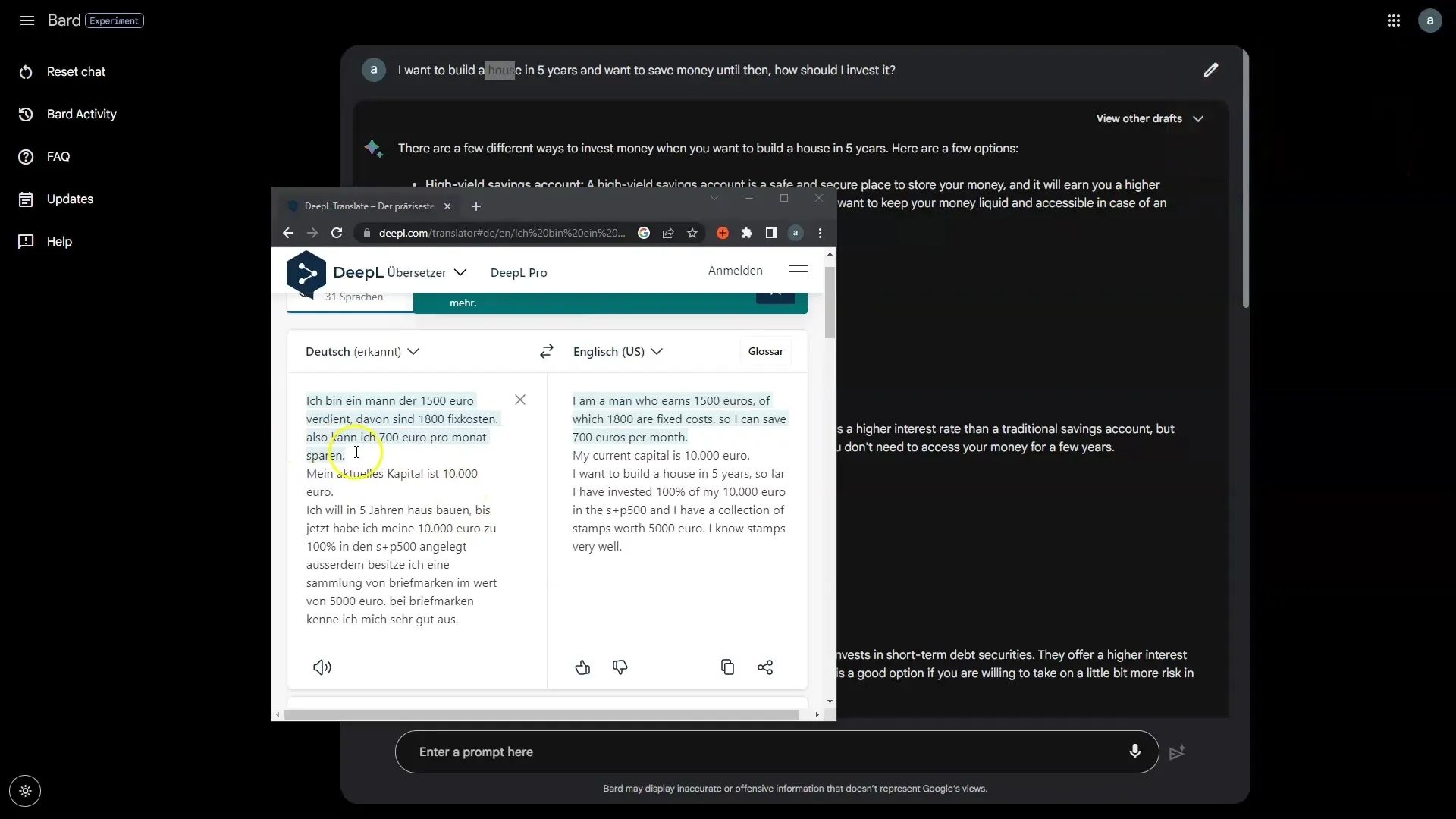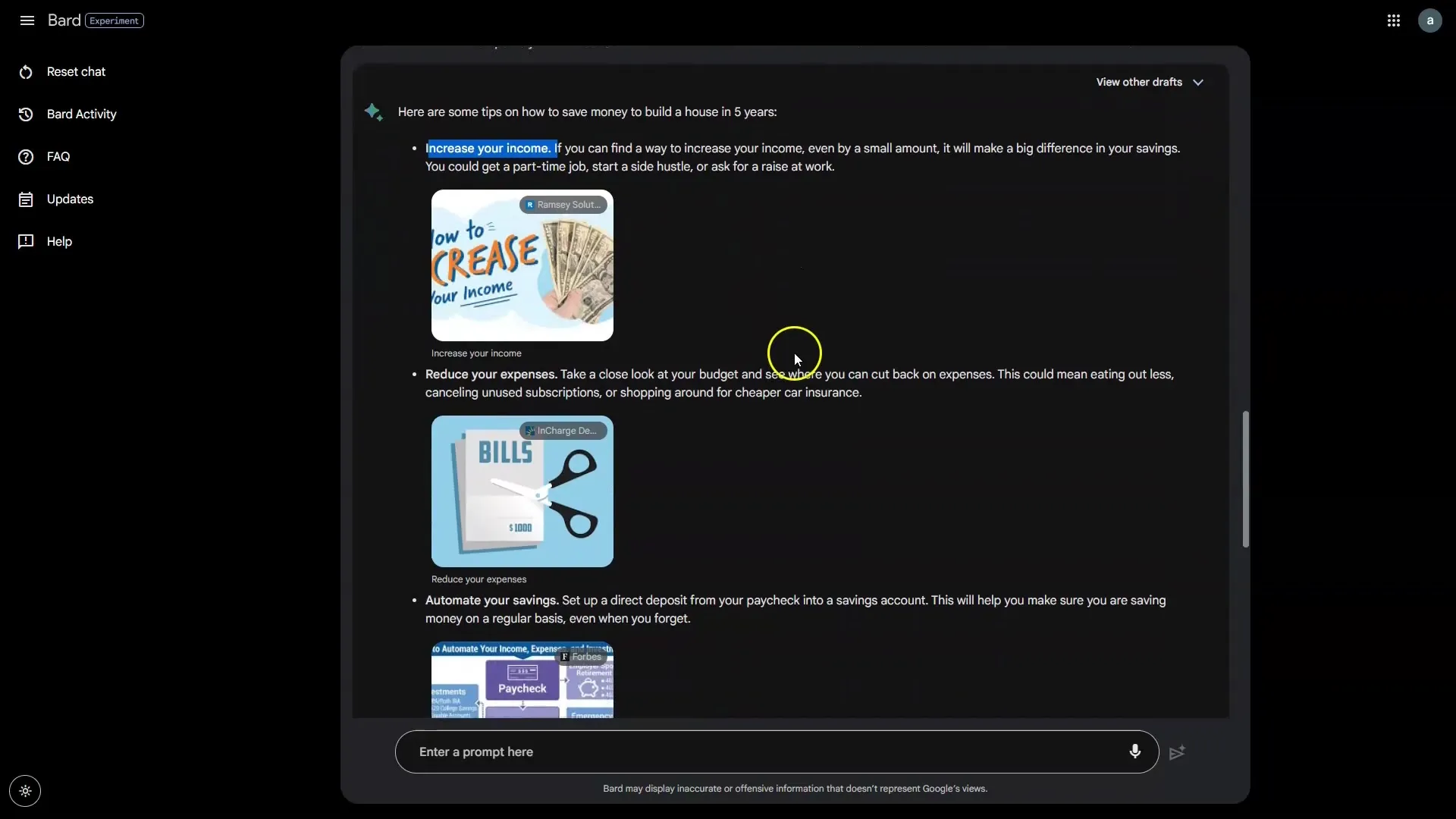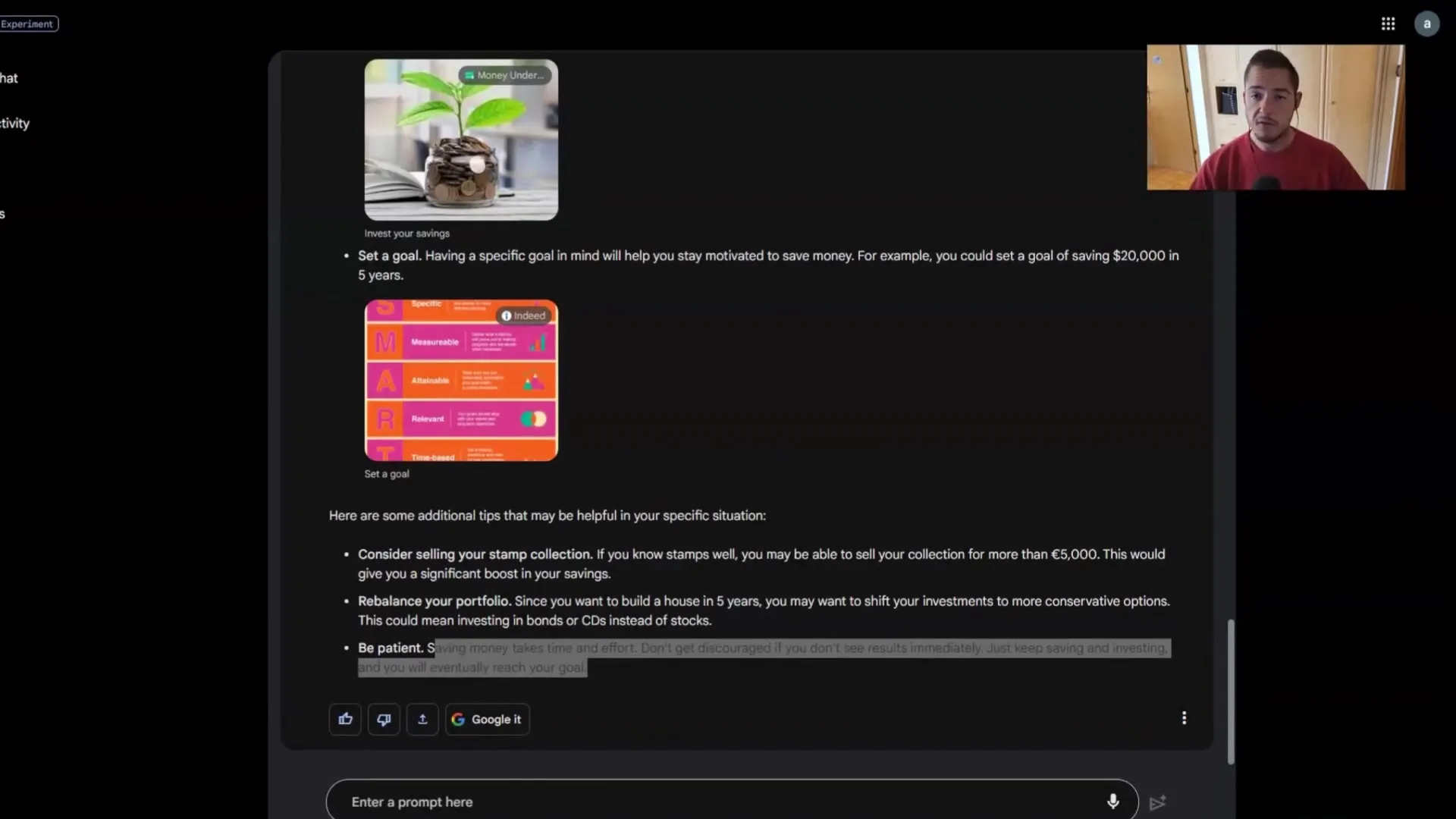The quality of the input prompt, or "Prompt," is crucial for the quality of the response you receive. In this tutorial, I will show you how to transition from a bad to a good Prompt in Google Bard. An effective Prompt provides the system with enough information to deliver specific and helpful responses. Let's go through the steps together to explore the full potential of Google Bard.
Key Takeaways
- A bad Prompt provides too little context, leading to general and inadequate responses.
- A good Prompt contains specific information that allows the AI to provide targeted and helpful advice.
- To achieve better results, you must specify the context, your goals, and your personal situation.
Step-by-Step Guide
Step 1: Identify a Bad Prompt
The first step is to understand what makes a bad Prompt. An example mentioned in the video is: "How should I invest my money?" This is a bad Prompt because it lacks specific information. Consequently, Bard struggles to provide a meaningful answer.
A bad Prompt fails to provide the AI with context about your income, assets, or previous investments. Due to the lack of depth, the response remains general and uninformative.
Step 2: Formulate a Better Prompt
To improve the quality of your responses, you should enrich your Prompt with more context. An example from the tutorial is: "I want to build a house in 5 years and want to save money until then. How should I invest it?" In this example, you provide Bard with a clear timeframe and a specific goal.

Thanks to this additional information, the AI can already deliver more specific answers. You will receive useful tips, such as the need to start early or have a balanced portfolio.
Step 3: Develop a Comprehensive Prompt
The next step to further enhance your inputs is to expand the information in your Prompt. A better Prompt could look like this: "I am a man who earns 2500 €, of which 1000 € are my fixed costs, so I can save 700 € per month. My current capital is 10,000 €, and I want to build a house in 5 years."

This Prompt provides Bard with a wealth of context. It becomes clear how much you earn, how much you can save, and what your current assets are. These details allow the AI to provide precise and helpful advice.
Step 4: Analyze the Responses
After entering your comprehensive Prompt, it is important to analyze the responses received. Bard's recommendations can now show you how to increase your income or reduce expenses.

For example, Bard could suggest automating your savings rate, investing your saved money, or setting a specific goal for your savings.
Step 5: Further Refine Your Prompt
To further optimize the quality of your results, you should be able to refine your Prompts. Correcting inputs can occur over time as you develop a better understanding of your goals and the required information.

Each time you add a new goal or piece of information, you will notice that the quality of the responses continues to improve. Google Bard will respond and help you achieve even more specific results.
Summary
We have seen how important it is to use well-thought-out Prompts in Google Bard. A bad Prompt does not provide enough information, while a good Prompt gives the AI the necessary details to provide helpful responses. The steps from identifying a bad Prompt to creating a fully informative Prompt will help you make the most of AI.
Frequently Asked Questions
What is a bad prompt?A bad prompt is an input that provides too little context, so that the AI cannot give specific, useful answers.
How can I improve my prompt?Add specific information about your goal, your income, your existing assets, and your timeframe.
What goal should I specify in my prompt?You should specify a concrete goal, such as saving an amount for an investment or for a purchase in the future.
How do I analyze Bard's responses?Examine the responses received and verify if they contain specific advice tailored to your context.
What are the benefits of a better prompt?A better prompt leads to more targeted, relevant, and useful answers that assist you in making decisions.


